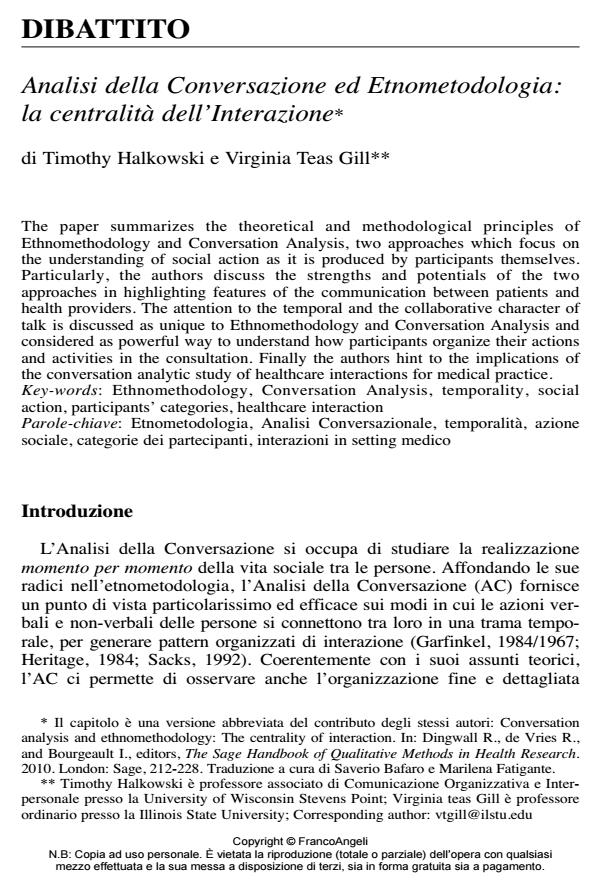Analisi della Conversazione ed Etnometodologia: la centralità dell’Interazione
Titolo Rivista SALUTE E SOCIETÀ
Autori/Curatori Timothy Halkowski, Gill Virginia Teas
Anno di pubblicazione 2013 Fascicolo 2013/1
Lingua Italiano Numero pagine 16 P. 183-198 Dimensione file 125 KB
DOI 10.3280/SES2013-001015
Il DOI è il codice a barre della proprietà intellettuale: per saperne di più
clicca qui
Qui sotto puoi vedere in anteprima la prima pagina di questo articolo.
Se questo articolo ti interessa, lo puoi acquistare (e scaricare in formato pdf) seguendo le facili indicazioni per acquistare il download credit. Acquista Download Credits per scaricare questo Articolo in formato PDF

FrancoAngeli è membro della Publishers International Linking Association, Inc (PILA)associazione indipendente e non profit per facilitare (attraverso i servizi tecnologici implementati da CrossRef.org) l’accesso degli studiosi ai contenuti digitali nelle pubblicazioni professionali e scientifiche
The paper summarizes the theoretical and methodological principles of Ethnomethodology and Conversation Analysis, two approaches which focus on the understanding of social action as it is produced by participants themselves. Particularly, the authors discuss the strengths and potentials of the two approaches in highlighting features of the communication between patients and health providers. The attention to the temporal and the collaborative character of talk is discussed as unique to Ethnomethodology and Conversation Analysis and considered as powerful way to understand how participants organize their actions and activities in the consultation. Finally the authors hint to the implications of the conversation analytic study of healthcare interactions for medical practice.
Parole chiave:Etnometodologia, Analisi Conversazionale, temporalità, azione sociale, categorie dei partecipanti, interazioni in setting medico
- Diverse prospettive di oncologo e paziente: la co-costruzione di una comprensione condivisa nella fase di anamnesi Francesca Alby, Mattia Baruzzo, Marilena Fatigante, Cristina Zucchermaglio, in SALUTE E SOCIETÀ 2/2015 pp.37
DOI: 10.3280/SES2015-002004 - Latin as a tool for social differentiation and epistemic asymmetry Franca Orletti, in Language and Dialogue /2019 pp.106
DOI: 10.1075/ld.00034.orl
Timothy Halkowski, Gill Virginia Teas, Analisi della Conversazione ed Etnometodologia: la centralità dell’Interazione in "SALUTE E SOCIETÀ" 1/2013, pp 183-198, DOI: 10.3280/SES2013-001015